Submit Your Haiku
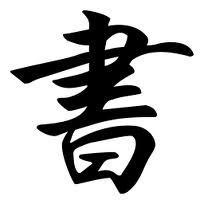
What are Haiku?
Haiku (Plural), Pronounced High-Coo are a traditional Japanese poem which juxtapose two ideas or images. Early Haiku or Hokku as they were known before the end of the 19th century, were printed in a single verticle line and consisted of 17 syllable-like on. The name haiku was popularised by Masaoka Shiki a Japanese author, poet, literary critic, journalist and major influence on modern or gendai haiku. Earlier masters of the traditional haiku include Basho, Buson and Issa. Haiku has become an increasingly popular art form for Writers and novices throughout the world, due to its short and ostensibly simple structure. The term haiku has more recently 'opened up' and now encompasses poems which, though similar, do not adhere to original criteria. Notably senryu a different style altogether, are often referred to as haiku. There is more on senryu further down this page, as well as further detail on a kind of modern movement to redefine what makes haiku poetry.
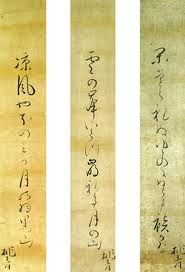
I began this page as I, myself, had ambitions to attempt haiku. As an aspiring writer I thought haiku would be good writing practice, as they were short and pithy. Before I began researching the content for this lens, I thought I knew exactly what constituted haiku. How wrong I was! I have come to learn that what I thought were haiku were actually Senryu. It seems also, that most traditional haiku include an observation about nature or the natural world, a point which had me stumped as I am far more interested in the human condition. However, i also found through my research that the above statements are actually in dispute by contemporary haiku poets and historians. While I was initially disappointed with what I'd found, I have been given new freedom in that what now constitutes haiku can vary widely.
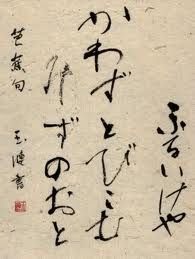
Structure and Translation into English
English translation of haiku develops directly into 3 lines of 5, 7 and 5. Yet while gendai haiku (a modern take on the form) are less likely to adhere to the "rule" of 17 on, the aforementioned juxtaposition of images is still the essence of the art. Often containing images of the natural world, traditional haiku are marked by a "cutting" word known as kireji, which usually appear at the end of a verse or phase, providing a grammatical pause and a kind of structural support to the piece. Specific to Japanese haiku, kireji are a word or word combination but in English where there is no alphabetical equivalent, there is a tendency to use dashes or ellipsis as a substitute.
A haiku is a profound testimony that a most humble object of nature when put into the simplest of aesthetic forms can become a revelation.
-Robert Speiss

old pond...
a frog leaps in
water's sound
.....
the first cold shower
even the monkey seems to want
a little coat of straw
- two haiku by Basho. The elipse is used as the kireji in this poem and the "frog" is the kigo, in that it evokes summer.
The Haiku Foundation.org have come up with some English colloquial non-words, which might be used as a substitute for the kireji, not only do some of these examples illustrate how the kireji works in Japanese haiku, they are also hilarious.
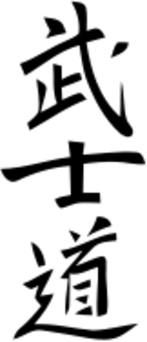
Haiku or Senryu?
So, what's the difference between haiku and senryu? Senryu tend to be about human foibles while haiku tend to be about nature, and senryu are often cynical or darkly humorous while haiku are more serious. Unlike haiku, senryu do not include a kireji (cutting word), and do not generally include a kigo, or season word. A line between the modern free-form haiku and senryu is hard to draw and there is much debate as whether certain modern poems should classify as either one or the other. The good news is that while the debate rages on, new generations of amateur poetry writers are springing up, undeterred by what could otherwise be considered constrictive rules. Considered a kind of hybrid by many contemporary traditionalists, an unofficial form of haiku are "Human" haiku. These poems take their inspiration from observations on human nature rather than simply Nature and the seasons. However, as George Swede, co-founder of Haiku Canada points out that, "humor cannot be used to distinguish between haiku and senryu because both types can have humor or not". Swede also points out that "Nature haiku...comprise only around twenty percent of published work (in the best periodicals and anthologies)."

Saying `just one game'
they began to play . . .
That was yesterday.
- translation of an old Senryu about the game of "Go" by an unknown author
"There are some people who believe any reference to human beings in a haiku turns the poem into a senryu. I disagree. In my opinion there should be no separation between human nature and the world of nature."
-Francine Porad, President of the Haiku Society of America
Human Haiku

long commuter ride
a stranger discusses
his incontinence
- Francine Porad - an example of a "Human Haiku"
alone at last
I wonder where
everyone is
- George Swede co-founder Haiku Canada
Some of my own attempts
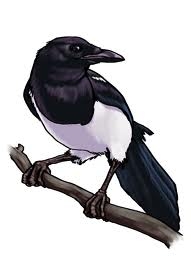
a singing magpie
one more lifts the melody
"this is mine" they sing
two black and white birds
melodiously singing
"this is my oak branch"
Wait...there's more...

on are syllables
As tigers are like house cats
They both live on earth
Kireji like knives
Dividing an idea
Separating worlds
Which of mine, of the above four Haiku did you prefer?


Reader Contribution number ONE
I heard a bird sing
A bliss in time
Now no more....

Reader contribution number TWO
Blemished by struggles
I persist along the path
brandishing life's stripes

Reader Contribution number THREE
Beach kitteh ponders
Is light wave or particle?
Ocean but fish soup?

Reader Contribution Number FOUR
#HaiTweet Voice mail a heinous wait on hold to reach a human,
frustration mounts.
Then birdsong in the garden reminds me of a parallel life

Reader Contribution Number FIVE
Yesterday, it was
Thirty three rings in the tree
Years pass by like wind

Reader Contribution number SIX
drugs were there
now i can't get drugs
no way now

Reader Contribution number SEVEN
He is beautiful,
So too is his family.
So I walk away.
Reader Contribution Number EIGHT
China toils to learn
what is within and without
and then find itself
Reader Contribution Number NINE
fingers to her lips
invisible cigarette
blossoms falling
Reader Contribution Number TEN
to be him
can't imagine a worse fate
to be me
Reader Contribution Number ELEVEN
bird sings at window
closing window, smash his head
now bird no more sing





